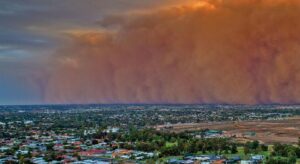Today, a highly significant event took place at the European Astronaut Centre in Cologne, Germany, where the European Space Agency (ESA) celebrated the graduation of a new class of astronauts. During the ceremony, ESA Director General, Josef Aschbacher, stated: “Today is a significant milestone as we celebrate the graduation of a new class of five ESA astronauts, who are now qualified to be assigned to future spaceflights.”
The group of new astronauts includes Spanish astronaut Pablo Álvarez Fernández, French astronaut Sophie Adenot, British astronaut Rosemary Coogan, Belgian astronaut Raphaël Liégeois, and Swiss astronaut Marco Sieber. Katherine Bennell-Pegg from the Australian Space Agency also graduated, becoming the first person from her country to do so, demonstrating effective international collaboration.
According to Pablo Álvarez, the first flight for this new generation of astronauts is scheduled for 2026, with an annual mission for the five Europeans until 2030. “The current plan is for the first of our generation to fly in 2026 and for there to be one mission per year until 2030 for the five Europeans,” Álvarez recalled during an open day at the European Space Astronomy Centre (ESAC) in Madrid.
The training of these astronauts has been rigorous and comprehensive, including science courses, pool immersions to simulate spacewalks, survival training, parabolic flights, and overcoming the centrifuge. In addition, these professionals have had to learn languages like Russian and acquire knowledge of first aid, such as inserting an intravenous line.
Josef Aschbacher mentioned that with this graduation, the number of ESA astronauts now stands at 11 from eight member states. In a statement on the social network X, he emphasized: “Thanks to this expanded family, we are ensuring both our long-term participation in key programs such as the International Space Station (ISS) and Artemis, the program led by NASA for humanity’s return to the Moon.” In his tweet, he also used the hashtag #TheHoppers, in reference to the nickname that this new group of astronauts has received.
The Minister of Science, Innovation, and Universities, Diana Morant, congratulated Pablo Álvarez and highlighted that this is a special day for those who believe in the young talent of Spain. “The first of the 21st century,” she added, referring to Álvarez. Remember that in the past, astronauts Pedro Duque and the Spanish-American Michael López-Alegría represented Spain on the ISS. López-Alegría even commanded the orbital complex and has recently participated in private missions.
The astronauts selected in November 2022 began their basic training in April 2023. The initial courses took place at the European Astronaut Centre of the ESA and subsequently in other locations around the world. The training encompassed knowledge in spacecraft systems, spacewalks, flight engineering, robotics, life support systems, survival, and medical training.
Following certification, the new European astronauts will go through the subsequent phases of training, including pre-assignment and mission-specific training, preparing for future missions to the International Space Station and potential missions to the Moon or Mars. ESA, which received over 22,500 applications from its member states, selected these five astronauts and twelve reserves, including Spanish astronaut Sara García Alonso and one person with a disability.
Finally, the new astronauts expressed their thoughts on the culmination of this training phase. Pablo Álvarez expressed his pride and excitement in representing Spain. Sophie Adenot and Rosemary Coogan also expressed their enthusiasm and gratitude for this opportunity, as did Raphaël Liégeois and Marco Sieber, who emphasized teamwork and scientific advancement. Katherine Bennell-Pegg expressed her determination to make the most of this opportunity for the Australian space industry and international collaboration.
via: MiMub in Spanish











